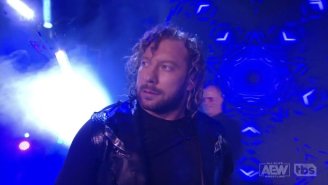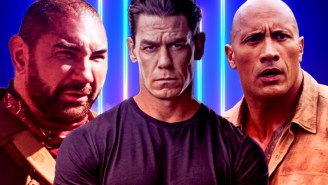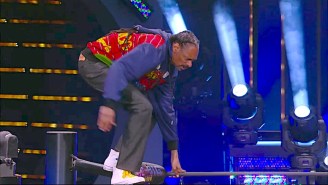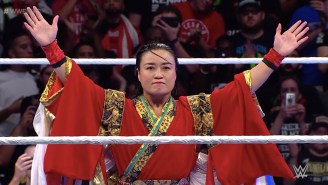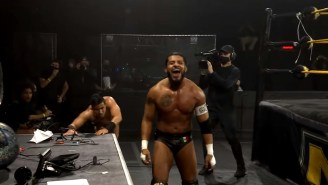Paul Heyman started off in the pro wrestling business as a backstage photographer before moving on to becoming a performer, finding his biggest stage in the now defunct World Championship Wrestling. Heyman — who played the role of a villainous mouth piece for a variety of antagonists — found his footing in the narrative elements of pro wrestling, and often paired with wrestlers who couldn’t sell themselves to the best of their abilities. During his tenure in WCW, it was clear that Heyman had a firm grasp of the necessary storytelling component of the business, but his prowess in that arena came to a true test when he left that promotion, and took the reigns of Extreme Championship Wrestling (ECW), a promotion based out of a bingo hall in South Philadelphia.
On paper, ECW shouldn’t have worked. Their South Philly headquarters was a far cry from the Sports Complex just minutes away. The ECW roster housed many talents who weren’t “fit” for the bigger entities like WWF and WCW; they weren’t hulking beasts, and many of them wouldn’t have been classified as world-class athletes. But, ECW had a secret ingredient: Paul Heyman.
One of the things that separated ECW from WCW and WWF was the format in which it delivered its product. Sure, ECW was violent, skirted the edges of fiction and non-fiction, and often tackled taboo subjects in the business, but it was the way they packaged those elements that truly made it original. Standard wrestling storytelling in an event would break down like a book of short stories; one segment is presented with an opening, a closing, and then the next tale — with new characters and narratives — begins. That’s just how it was done.
Not with Paul Heyman.
Oftentimes, he chose to let the segments in ECW bleed into each other, with some stories giving way to bigger ones, or even allowing narratives to cross each other and merge into newer specimens. It created a sense of chaos and uncertainty for the fans, and the audiences paid back the approach by packing that sweaty arena in droves, pouring their passions into the off-brand product. On June 6, 1997, another hot summer night in South Philly, Paul Heyman was gearing up to deliver a masterstroke of his brand of pro wrestling literature.
Up until that night, one of the marquee match-ups in the company was Raven vs. Tommy Dreamer. The enemies couldn’t have been more different; Raven, the eloquent misanthrope, was perfectly matched against Dreamer, playing the role of the likable hero. Throughout their feud, which lasted years and extended back to ECW’s early days, Dreamer never beat Raven in a one-on-one match. On this night, dubbed Wrestlepalooza, their match was a loser-leaves-town battle. Dreamer would have to finally prevail against his nemesis, or find work someplace else.
Slotted after the halfway point in the night’s action, Dreamer and Raven engaged in warfare, with weapons, outside interference, and even a femme fatale brawl playing parts in the match. The ECW fans were ravenous, cheering on their hero Dreamer, and begging for him to finally vanquish Raven to the outer realms of South Philly. More interference occurred, and then it was just Raven and Dreamer trading their signature finishing move (they shared the same one) back and forth with neither man allowing a pin. It was high drama in the arena, and the audience became unglued, many of them hopping up and down in anticipation of the climax.
Readying his final blow, Dreamer held up his arm and screamed “E-C-F*cking-W!” before delivering another finishing move. He laid atop of his foe, and got the long-awaited three count.
“His dream has come true! It’s the greatest night of his life!” proclaimed ECW announcer Joey Styles.
It was the classic battle of good and evil concluded, a fight that has sustained the majority of fiction since the beginning of time. As different as ECW was, fans of the product still craved the hero becoming the victor in the face of adversity. The formula of light overcoming dark continued to ring effective. A brief celebration ensued for the hero, Dreamer, and then…
… the lights in the arena went out.
When they came back on, antagonist Rob Van Dam was standing in the ring with Dreamer. He attacked him, ruining his celebration. The two went back and forth for several moments until Dreamer got the upper hand, and was preparing to finish Van Dam the same way he did Raven with his finishing maneuver. Then… the lights went out again.
In total blackness, the roar from the packed ECW arena probably could have reverberated the rafters at the Philadelphia Spectrum, a venue where Hulk Hogan and Andre the Giant helped establish WWF as the brand in professional wrestling. But here, something special — and altogether different was happening — in a place that was likely one-tenth of the size of that arena. When the lights came back on, another villain was in the ring with Dreamer: Sabu.
Sabu and Van Dam put a collective beating on Dreamer, while audience members screamed on in disapproval. This was Dreamer’s night, not their’s. And as much as it was Dreamer’s night, it was the fans’ night; they had waited years for Dreamer to finally gain victory over Raven. Like other unsinkable heroes, Dreamer fought back, and had Sabu and Van Dam in a compromising position after hitting them with a devastating blow. But before he could truly lay them to waste, the lights went out a third time.
The fans wondered who else could appear that would declare Dreamer his enemy. Who else would try and remove his moment of glory? Who else was left?
When the lights came on for the last time, one of the most unexpected moments in pro wrestling history occurred. A figurehead from the WWF, a man who voiced their flagship show on Monday nights, and a legend in the business who stood for everything that ECW pushed back against, appeared in the ring facing Dreamer: Jerry “The King” Lawler.
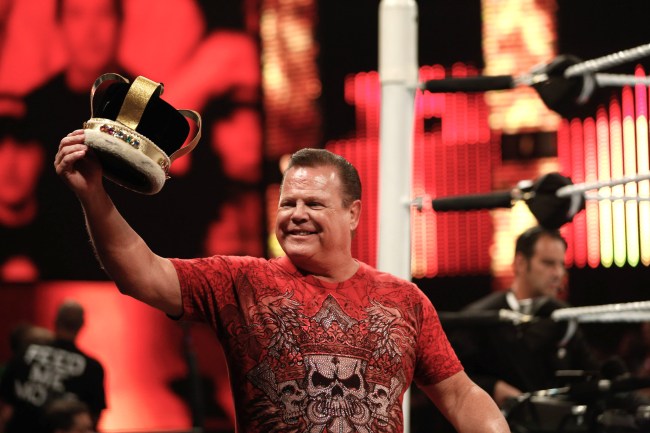
ECW was known to heave the boundaries of storytelling so far that fans would become riotous, sometimes attempting to claw their way over the guardrails to pummel a wrestler. This was one of those times. Jerry Lawler was one of the shining faces of the WWF and their glossy product, a polished factory pumping out puppets while ECW remained the antithesis of such machinations, choosing to stay on the outskirts of the business, the fans loving them for that. This was the king in the high castle kicking open the doors of the peasants and pissing in their oatmeal. This was… revolution.
For minutes on end, the protagonists in ECW’s locker room came pouring out to attack Lawler, Sabu, and Van Dam, and one by one, the WWF faction disposed of them. Lawler grabbed the microphone and pushed the crowd’s buttons even further.
“This bingo hall should be made out of toilet paper because there’s nothing in it but sh*t!” he screamed.
ECW wrestlers had actually invaded WWF television before, but no one expected the voice of Monday Night Raw to make his way to Philadelphia to physically dismantle every one of their hardcore heroes. After seemingly every ECW wrestler had been disposed of, a familiar music came blaring through the speakers. Out from the back walked one of the toughest characters Paul Heyman had ever created, Taz. With the rabid fans foaming from their mouths, Taz walked to the ring, and with just his presence alone (he was known to violently dispatch his enemies with a trademark brutality), he was able to clear the ring of the faction of villains.
The emotional seesaw that Paul Heyman had put the Philly fans through that night was enough to make even the most diehard devotee explode with excitement, and they loved every minute of their expressed hatred. It felt like Heyman had been building up to this moment for years, and he had. The lengthy war between Raven and Dreamer led to one of the boldest angles in history, when the invisible scoundrel stepped out of the limelight to enter the shadows of South Philly. Pro wrestling storytelling is rarely this grandiose on such a small scale, and, likely, it never will be again. The WWF went on to ultimately win the war of the wrestling promotions, now owning both ECW and WCW; it’s the “only game in town.”
It’s okay, though. Paul Heyman and ECW had their moment in the sun when it seemed like they would be forever relegated to the shade. And on his 50th birthday, we should thank the man for gifting us a vision of what pro wrestling could be outside of the mass-produced machines. Wrestlepalooza ’97 is floating around online for our consumption, a masterclass in live athletic-fiction that we should consume every now and then just to remember what it tastes like.
But, it would be nice if Paul gave us another helping.

